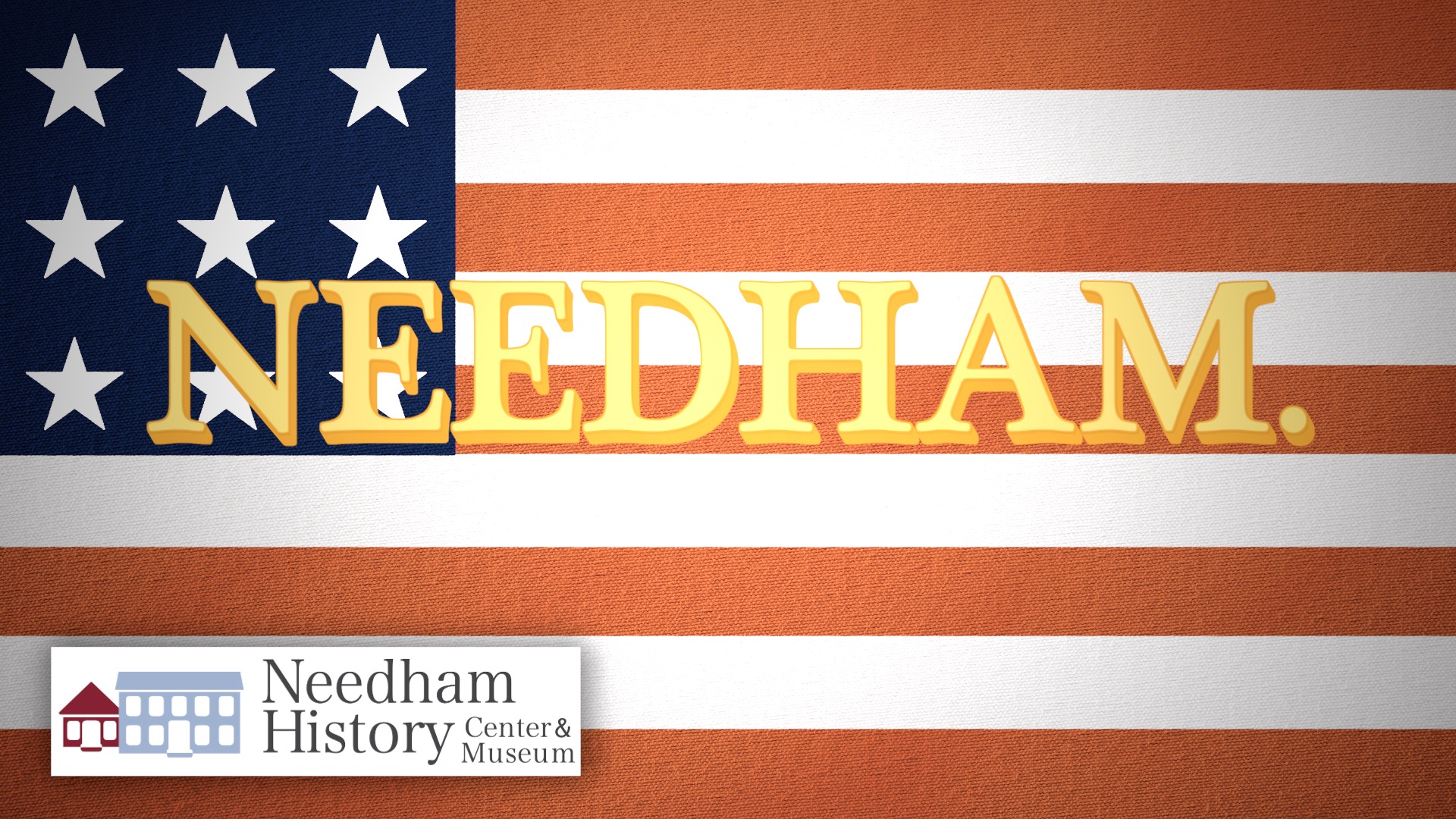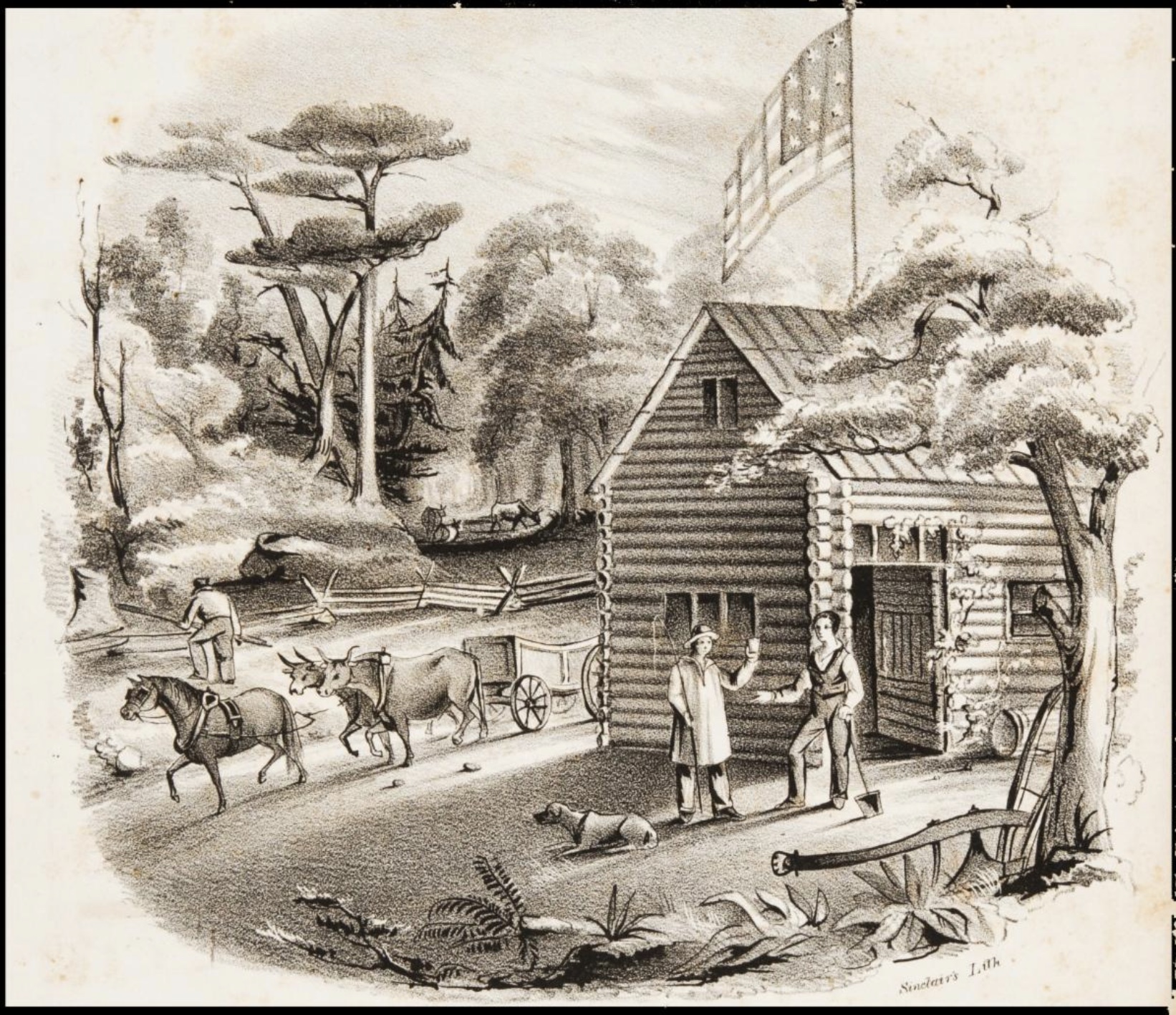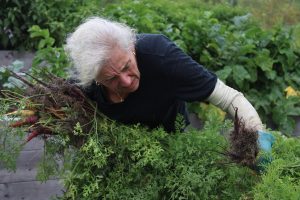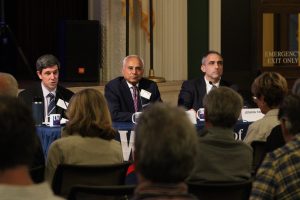
Needham History: Marching Under the Banner of Henry Clay
“The skies are bright, Our hearts are light…..”

Marching Under the Banner of Henry Clay
The political conventions are over. Even though it feels like the campaigns are endless, the most intensive phase – the last two urgent months – are now upon us. Some states are battlegrounds, attracting both attention and money from throughout the country. Living in reliably-blue Massachusetts, however, there is rarely any national attention paid to us.
It was not always thus.
We are used to a two-party democracy. Although there is a mild spectrum of policy differences within each party, the lines between the current major parties are pretty clear and there is a lot of daylight between. Small third-parties trying to fill the gaps have not had much traction. In the mid-19th century, however, party policies were in flux, and multiple parties and party factions arose. Holdovers from the 18th century, like the Whigs, were losing relevance. Urgent and divisive national issues such as immigration, enslavement, and centralized federal control of the economy all gave rise to a number of new parties, such as the Democrats (states’ autonomy and anti-tariff), the Know-Nothings (anti-immigration), the Liberty Party (abolition), and the Free Soil party (which opposed the expansion of enslavement into the new states).
The presidential election of 1844 pitted the Whig candidates Henry Clay and Theodore Frelinghuysen against Democrats James Knox Polk and George M. Dallas. The pivotal issue of the campaign was the Annexation of Texas and its intended result of expanding slavery into the new territories. Texas was fighting for its independence from Mexico, which had recently outlawed enslavement, and was seeking to be annexed to the United States as a new slave-holding territory. Polk and the Democrats supported the Annexation, even though it meant certain war with Mexico. The party at the time was an unstable alliance of anti-slavery northern states and pro-slavery southern states. Clay and the Whigs opposed both the Annexation and the prospect of a foreign war. Even so, despite the Whig Party’s nominal anti-slavery stance, Clay’s support among anti-slavery voters was reluctant and unenthusiastic – although he supported some anti-slavery legislation, Clay was an unabashed slaveholder himself. The Whigs chose Frelinghuysen – “the Christian Statesman” – as the candidate for Vice President as a balance to Clay’s hard- drinking reputation and to shore up support among anti-slavery voters. (Rodney Frelinghuysen, former Congressman from New Jersey, is a descendant).
This flag was a banner for Henry Clay’s 1844 campaign. It is hand-painted on silk, and was intended to be carried in a campaign parade or displayed at a political rally. That “Needham” was written across it shows that the banner was used locally, and that Clay’s supporters campaigned here in town.
Polk won the national election by a narrow margin. Clay won MA, but lost in Needham by a margin of 134-121. The Liberty Party candidate, James Birney, collected 22 Needham votes. Whether Clay would have won in Needham without the inclusion of Birney is an open question; it is notable, however, that although the town’s vote went to Polk, Needham did not support his decision to annex Texas. The Mexican War (1846-48), because of its intent to extend slavery into the new territories, is the only American war that not one man from Needham fought in.
Clay’s loss in Needham was consistent with the town’s political trends in the 1840s through 1860s, which were moving away from the Whigs. As George Kuhn Clarke noted in his History of Needham, 1711-1911, “For reasons not now apparent, Needham was Whig during the administration of President [Andrew] Jackson [1829-1837]…” However, by 1837 the town had become reliably Democratic, allied with the northern, anti-slavery wing of the party. As the Democrats splintered over the issue of enslavement, Needham support followed anti-slavery policies, with factions voting for the Liberty Party, and by the 1850s a strong majority for the Free Soil Party and its successor, the new Republican Party.
The Clay banner is quite lovely but a little obscure. Were they really comparing their candidates to a horse and a cow? The pastoral scene shows a small log cabin-style farmhouse and its yard. In the foreground, two men are leading a horse and two oxen before a plow. A small pennant on the plow reads “To the WHITE HOUSE.” In the sky above is the patriotic eagle and its firmament of stars. “Clay and Frelinghuysen” is written on the back. The image might have been intended to evoke hardy frontier-folk – after all, the Whig Party’s own mascot was the Raccoon, whose famous tail decorated the even- then-iconic frontiersman’s hat (“Davyyyyy, Davy Crocket, King of the Wild Frontier.”) (And thank you, Yes – that was before my time.)
The imagery of the horse, ox, and plow had also appeared earlier, and was a recurring theme in Whig campaign iconography in the 1840s. The Whig political paper, The Log Cabin, featured this same image on its masthead. Several song sheets from the Whig’s 1840 campaign of William Henry Harrison and John Tyler also showed the scene of the plow, horses, and oxen outside the cabins. One of these engravings was used again for Clay on the cover of the song sheet for “Harry Clay and Frelinghuysen,” written for the Whig’s national convention in 1844 by J. Greiner:
The skies are bright,
our hearts are light,
as one man all the Whigs unite…
…Hurra! Hurra! The people’s rising, for Harry Clay and Frelinghuysen!
Wow – it even rhymes. They sure don’t write ‘em like that anymore.
The Clay-Frelinghuysen Banner will be just one of the special objects highlighted during the Needham History Center’s Annual Meeting & Reception on September 8.
Cover illustration for the song sheet, “Harry Clay and Frelinghuysen,” written for the Whig’s national convention in 1844 by J. Greiner. The horse, oxen, and plow are similar to the ones that are depicted in the Clay banner. This same illustration, and others very similar, were also used by the Whigs in the 1840 election for campaign songs supporting William Henry Harrison and John Tyler.

 |
Gloria Polizzotti Greis is the Executive Director of the Needham History Center & Museum. For more information, please see their website at www.needhamhistory.org. |

